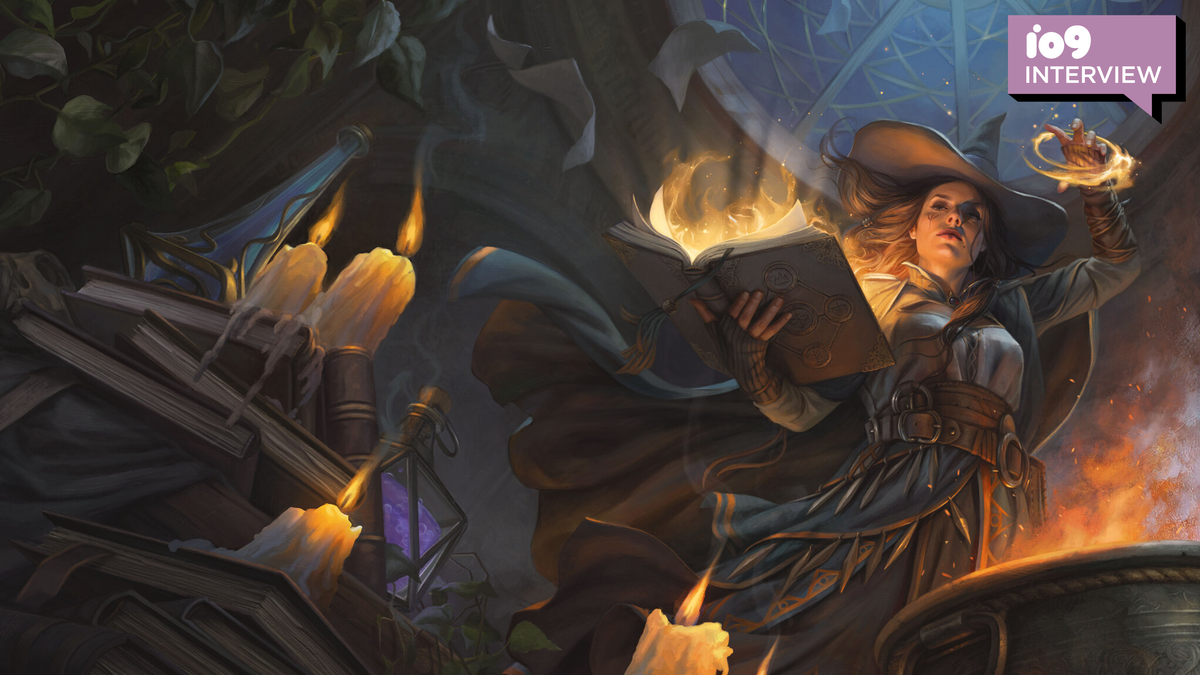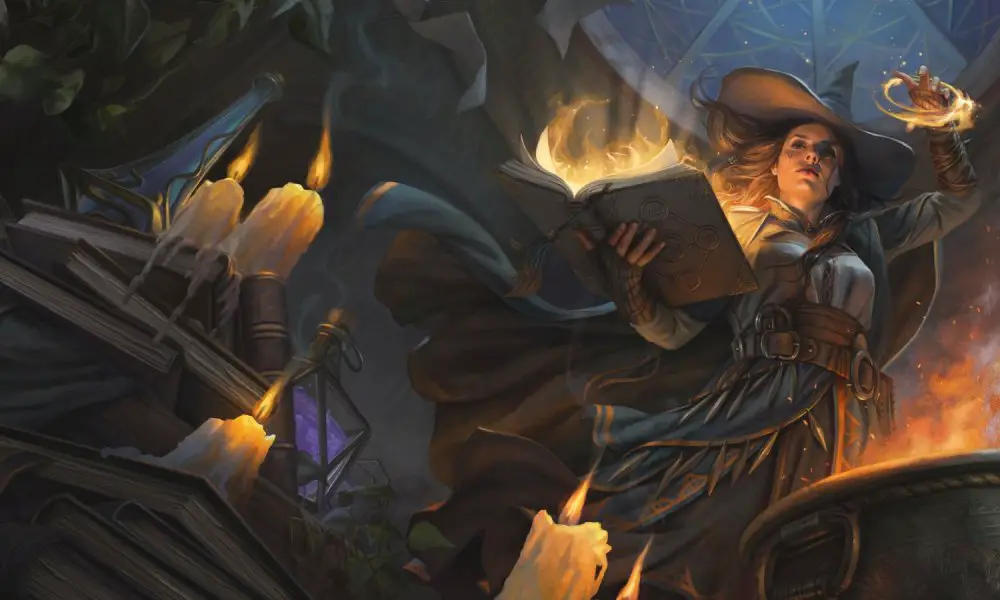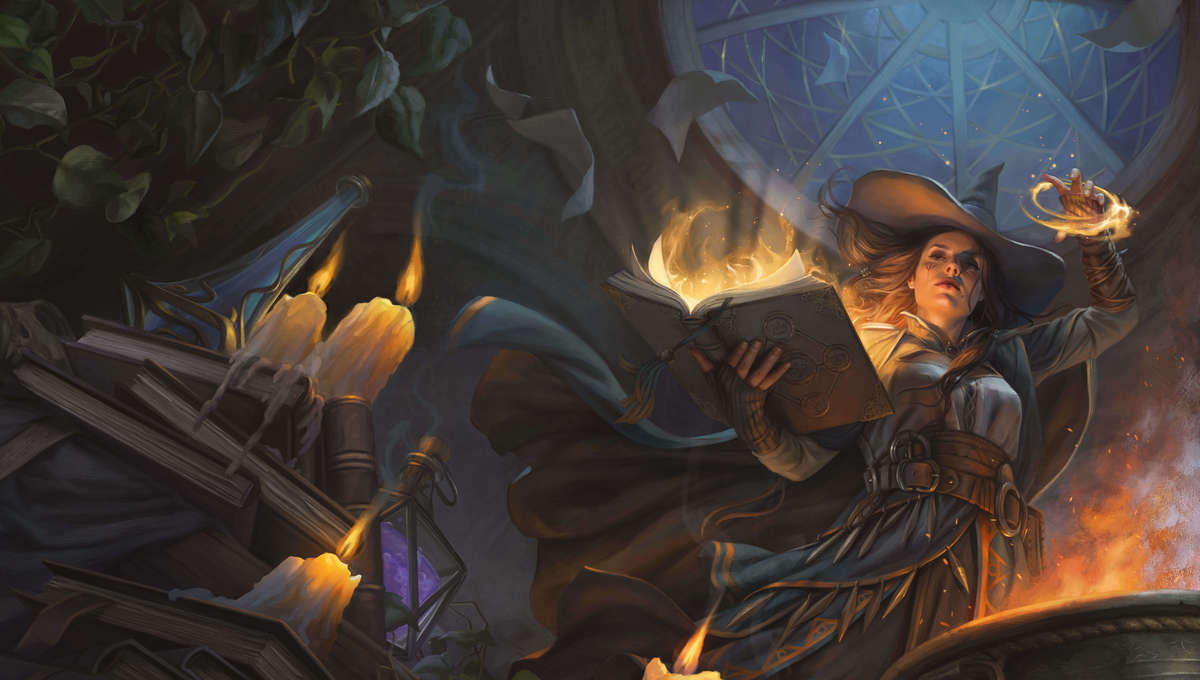The new D&D book has been revealed, and it is Tasha's Cauldron of Everything, "a magical mixture of rules options for the world's greatest roleplaying game." The 192-page book is due out November 17th, with standard and alternate covers, and contains more subclasses, spells, character options, group patrons, and rules. Oh, and psionics!
Cover art is by Magali Villeneuve
WHAT WONDERFUL WITCHERY IS THIS?
A magical mixture of rules options for the world's greatest roleplaying game.
The wizard Tasha, whose great works include the spell Tasha’s hideous laughter, has gathered bits and bobs of precious lore during her illustrious career as an adventurer. Her enemies wouldn’t want these treasured secrets scattered across the multiverse, so in defiance, she has collected and codified these tidbits for the enrichment of all.
- EXPANDED SUBCLASSES. Try out subclass options for every Dungeons & Dragons class, including the artificer, which appears in the book.
- MORE CHARACTER OPTIONS. Delve into a collection of new class features and new feats, and customize your character’s origin using straightforward rules for modifying a character’s racial traits.
- INTRODUCING GROUP PATRONS. Whether you're part of the same criminal syndicate or working for an ancient dragon, each group patron option comes with its own perks and types of assignments.
- SPELLS, ARTIFACTS & MAGIC TATTOOS. Discover more spells, as well as magic tattoos, artifacts, and other magic items for your campaign.
- EXPANDED RULES OPTIONS. Try out rules for sidekicks, supernatural environments, natural hazards, and parleying with monsters, and gain guidance on running a session zero.
- A PLETHORA OF PUZZLES. Ready to be dropped into any D&D adventure, puzzles of varied difficulty await your adventurers, complete with traps and guidance on using the puzzles in a campaign.
Here's the alternate cover:
UPDATE! An online event called D&D Celebration from September 18th-20th will be hosted by Elle Osili-Wood, which is "an epic live event with panels, gameplay, & previews of the book!" See the video in the Tweet below!
Gather your party and join the adventure at D&D Celebration 2020, an online gaming event open to fans all over the world!
Celebrate the release of Icewind Dale: Rime of the Frostmaiden with a weekend of Icewind Dale–themed virtual play sessions and help us create the biggest virtual tabletop roleplaying game event ever! Fans will also get the chance to preview some content from Tasha’s Cauldron of Everything, the forthcoming book featuring massive rules options, subclasses, and more for the fifth edition of Dungeons & Dragons. Watch featured play sessions with D&D luminaries and learn something new with a slate of panels led by the D&D design team and community.
UPDATE! Check out the Nerdarchy site for some previews.

Tasha’s Cauldron of Everything Has, Well… Everything for 5E D&D
The follow up to 2017’s Xanathar’s Guide to Everything, on Nov. 17, 2020 fifth edition Dungeons & Dragons upcoming Tasha’s Cauldron of Everything must indeed possess powerful …
 nerdarchy.com
nerdarchy.com
UPDATE! Other news items around the web about this book:

With D&D's Next Rulebook, Character Creation Will Never Be the Same
Although Dungeons & Dragons’ fifth edition has added as many classes, races, and rules as it has since it first began, for the most part, the way players create characters has stayed the same. You pick a race, that race defines certain things about you, and so on. But the game’s next sourcebook...
 io9.gizmodo.com
io9.gizmodo.com

Tasha's Cauldron of Everything coming in November, brings new ways to personalize your characters
Wizards of the Coast has announced its next D&D book! Entitled Tasha’s Cauldron of Everything, this rules expansion follows up Xanathar’s Guide to Everything and will be available on November 17th. Providing both players and DMs with the tools to level up their games, the 192 page tome will be...
 gamingtrend.com
gamingtrend.com

Dungeons & Dragons Announces New Book and Fall Event - IGN
The D&D team reveals an online community event in September and a new sourcebook soon to follow.

D&D's next expansion, Tasha's Cauldron of Everything, adds new subclasses and racial customization
Dungeons & Dragons is getting its biggest rules expansion in three years, courtesy of one powerful witch. In November, Tasha’s Cauldron of Everything will hit shelves, offering D&D players several new subclasses, some exciting new spells, and a new way to create characters that’s fully...

